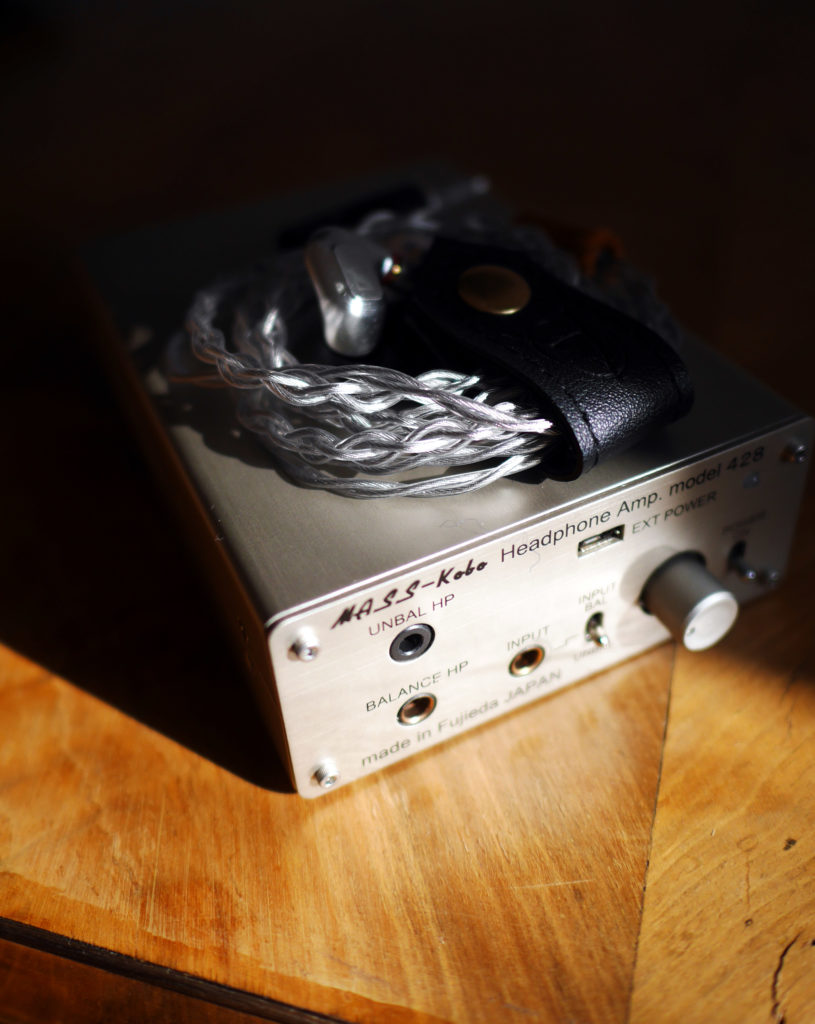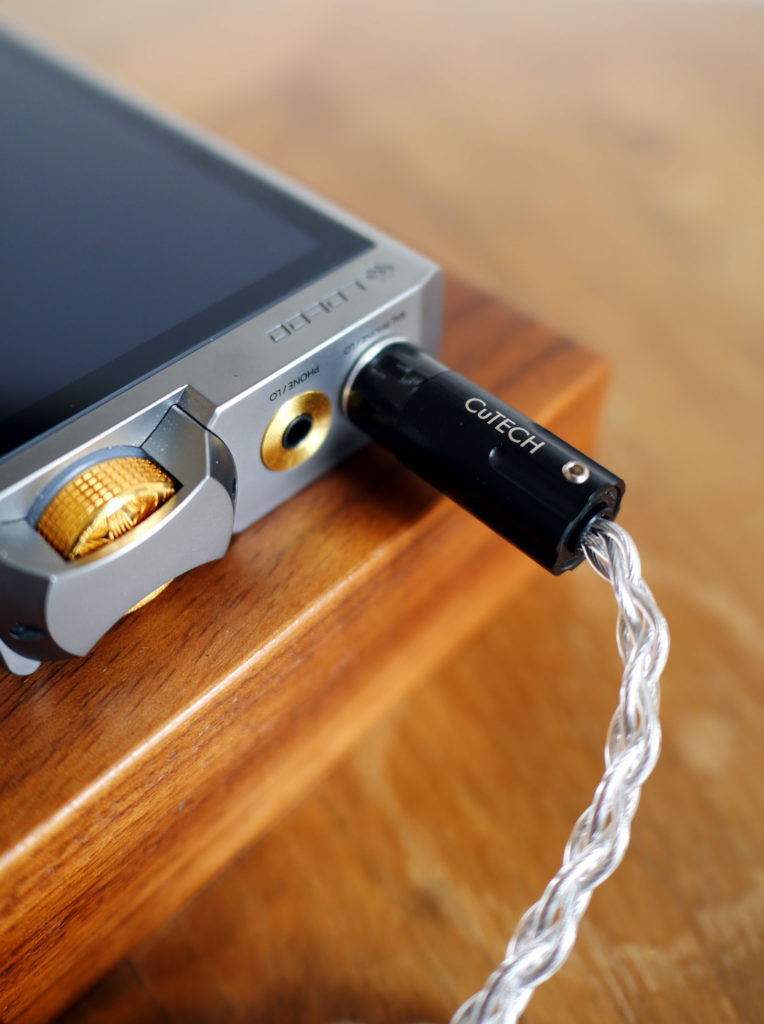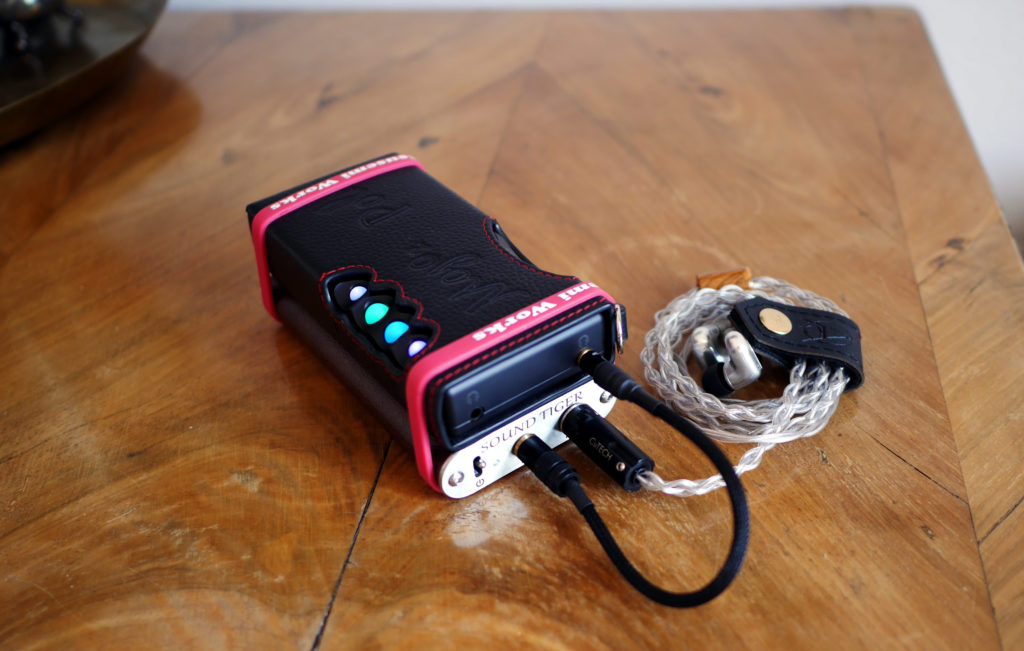The Sennheiser IE900
Although there exist higher-end, more esoteric and no doubt more resolving IEMs, Sennheiser’s IE900 together with their IE600 have been proven to be a favourite IEM for many people including myself. In my own case, their fit, timbre, and technical performance all hit the spot and leave little desire to explore other IEMs. That said, the one thing that is wholly unsatisfactory about the IE900 is the stock cable. Not only is it ergonomically awful, but it also sounds congested and rather dry, and certainly doesn’t do justice to the IE900. As such, I wanted to find a cable which would milk every last drop of performance from the IE900. To this end, it’s my pleasure to review the Opus Palladium cable from Arctic Cables.
![]()

Palladium seems to have earned a bit of an allure within the high-end audiophile community, although its use in cables has been established for several decades. Whether this high status is a question of hype is a matter of debate.
The Opus Palladium from Arctic Cables
To begin, here are some specs:
- 26-AWG X4
- Cutting-edge single-crystal OCC ultra-pure palladium-plated silver
- Most advanced Type-6 litz geometry
- Pure Japanese fine cotton & kevlar central core
- Individually Enamelled strands
- Cryogenically treated
- Arctic’s ‘Ultraflex’ TPU insulation
The Opus Palladium is from the Flagship range, and the build, ergonomics, and aesthetics are befitting this tier. In terms of build, the Opus Palladium has a very refined quality to it, which is both nimble yet sturdy. This is a cable that one wants to take care of, but at the same time the build is robust and solid. The wooden splitter, which I believe is new, is an especially nice touch. The set I have is terminated in CuTech’s 4.4mm plug, which also contributes to the sense of robustness. With respect to ergonomics, it is more or less perfect. I had asked Arctic Cables to not install memory wire on the cable, because the IE900 and IE600 are so light they don’t need it. The cable has a very pleasant fit, adds little weight, and applies almost no pressure on the ears. Perfect.

How does Palladium sound?
For these comparisons, I ran the IE900 from a range of sources, but largely from Lotoo Paw Gold Touch Titanium, which is both highly neutral and highly resolving. I also tired the cable from a series of amps including portable amps such as Mass Kobo 428 as well as the newly released Sparkos Labs Gemini tube amp. The IE900 can be driven without too much effort from any source, but it has a remarkable capacity to scale-up the more resolving one’s source is. I also find the IE900 is sufficiently transparent enough to both highlight the strengths and weaknesses of any given system. After giving the Opus Palladium a burn-in time of a week or thereabouts, I began by comparing it with some other cables I already had. My sample music consists of local files only, ranging from 16-bit FLAC to SACD files.

The first thing that immediately struck me about the Opus Palladium and IE900 pairing was the transparency. This is a neutral sounding cable, but is remarkably transparent and resolving, presenting a wide soundstage and a very clean and clear presentation. It should be said that the Opus Palladium will neither modify nor “fix” any quirks within the frequency response of a given IEM. Some people have observed that the IE900’s mids are slightly lacking texture and body. I don’t find this an issue myself but then I consider myself “mid-sensitive,” so anything remotely mid-forward is an unpleasant listen to my ears.

As such, the Opus Palladium neither adds nor subtracts what is already there, but instead generate a more resolving and coherent presentation of the IEM itself while also retaining its tonality and timbre. More specifically, the Opus Palladium contributes to the IE900 sounding more defined in terms of image placement, more detailed in terms of establishing a blacker background, and more immersive in terms of providing a more holographic soundstage.
Comparison
These comparisons do not include the stock cable, mostly because the stock cable is frankly awful especially ergonomically but also in terms of failing to do justice to the IE900.
Vs. Brise Audio ASUHA-Ref.2: Brise Audio are a company from Japan who have gained a great deal of enthusiasm within the American and European market. Indeed, I myself am also a fan especially of their headphone cables as well as their interconnects. The ASUHA-Ref.2 is a mid to upper end cable in their IEM range, the most expensive of which can go up to $3,000 if not beyond. Compared to the Opus Palladium, the ASUHA-Ref.2 is slightly smoother sounding but with very precise imaging and a pitch-black background, which Brise are well-known for. The Opus Palladium shares some of the attributes of the ASUHA-Ref.2 but offers more refinement, with greater extension in the high and low end. Whereas the Opus Palladium is also highly ergonomic and has no comfort issues at all, the Brise cable is let down by stiff ergonomics and a use of a titanium memory wire, which personally I find unusable.
Vs. Forza Audioworks Claire Hybrid IEM: Forza’s Claire Hybrid IEM is an 8-wire IEM cable. It’s not featured on their website, but has to be requested and costs about $400. In terms of performance, I find it’s Forza’s best sounding cable, out performing their Noir Hybrid cable, which I find rather too warm and veiled sounding. It’s also ergonomically malleable despite being a thick 8-wire configuration. Tonally and technically, it offers good performance for the cost, but when compared to the Opus Palladium, its limitations are laid clear. Whereas the Opus Palladium offers a highly resolving, crystalline presentation, the Forza sounds congested, narrow, with some “grit” in the presentation. Switching between them is not subtle but dramatic, and attests to the benefits of cable rolling.
Vs. Plussound X8 Copper: Plussound are also a well-known cable maker who offer a range of lines form budget to the high-end, including their own take on palladium. The X8 Copper is in their higher-end range but still quite affordable. With respect to build, fit, and ergonomics, the Plussound is excellent. This is a well-built cable, which gives the impression of providing many years of use. Because it’s copper, it tends to give the IE900 a rather warm presentation, which takes away some of the edges in the upper-mids. Smooth though this pairing is, it tends to be rather soft and lacking resolution. In comparison, the Opus Palladium is a far more neutral sounding cable, with greater sparkle and extension in the top end though without any stridency or harshness. In parallel, the transients in the bass are snappier and the mids more layered.

Conclusion
Arctic Cables continue to impress me on every level. From their customer service to the performance of the cables themselves, everything is done with care and precision. The Opus Palladium is no less different. As their currently highest IEM cable available, it offers a refined presentation, marked by a highly resolving and transparent presentation, which improves on every aspect of the stock experience of the IE900. It’s not a cheap cable, but nor is it absurdly expensive. If you have an IEM you love and plan on committing to it, then the Opus Palladium is an excellent choice for extracting every last drop of performance from that IEM.

